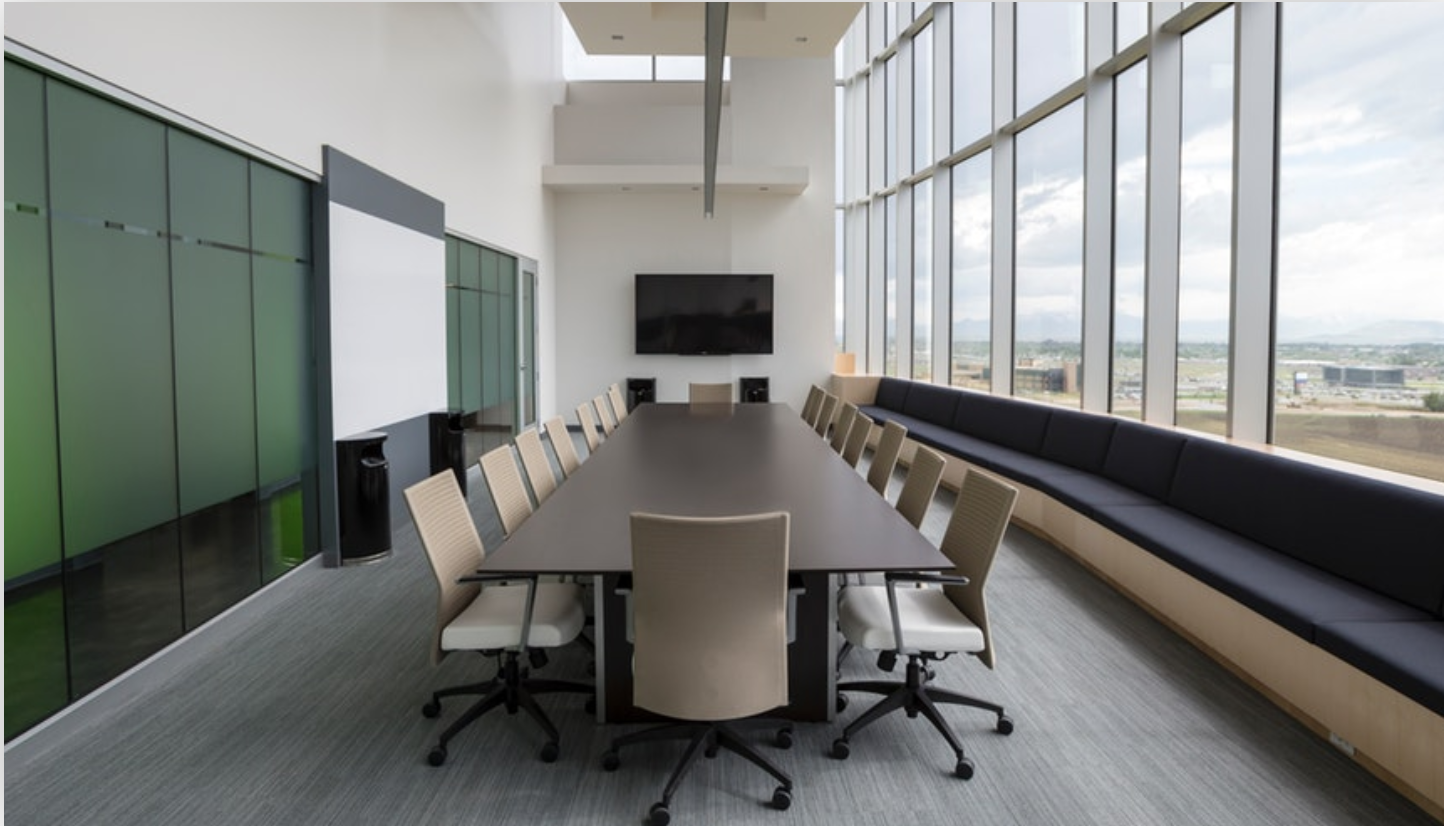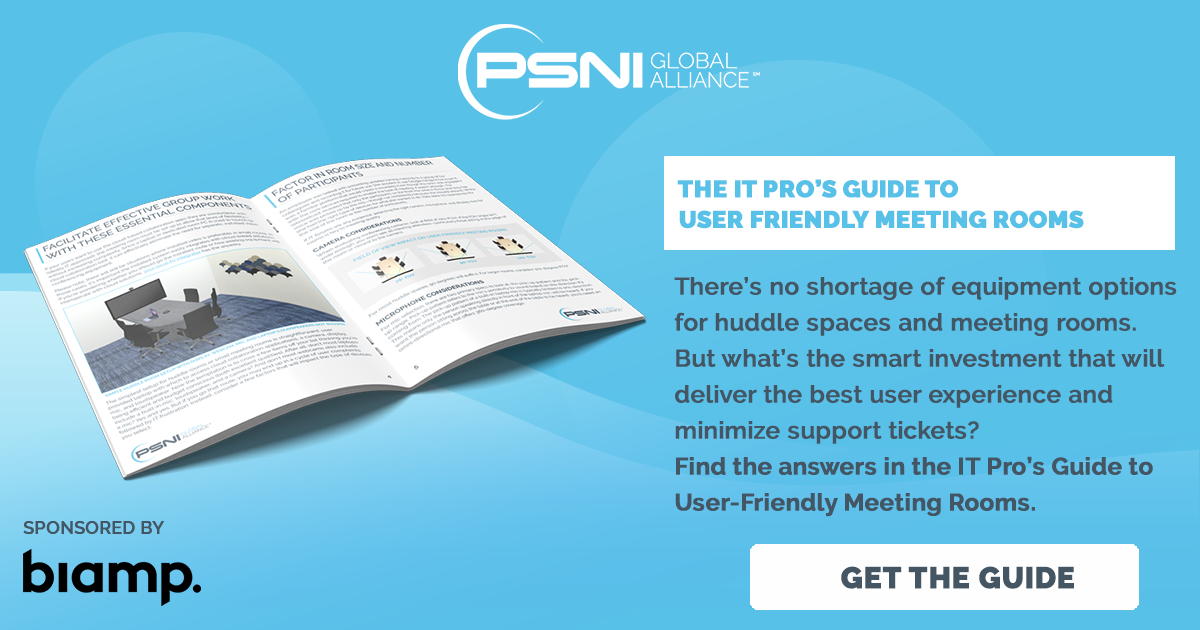If you’ve ever been forced to sit so close to a large display that you can’t take in the entire view, you know that size matters. A display that is too small for the room isn’t any better. In conference and meeting spaces, one size doesn’t fit all. The size of the room and how you plan to use the display will determine the size you need.
The two most common mistakes when choosing a display size are going too big or going too small. A display that’s too big can overwhelm your meeting room and your meeting participants. People at the front of the room nearest to the screen have to crane their necks back to take it in, and people in the back of the room might have their view blocked by the table or their colleagues’ craning heads. A display that’s too small means people in the front have to squint or move closer to see what’s being displayed and people in the back probably won’t be able to see it at all. And in both cases, meeting productivity suffers because participants can’t focus on—or can’t see—the information being discussed.
Keys to Choosing the Right Display Size
So, what’s the secret to choosing the right display size? Taking into account these three critical criteria will help you choose the display that’s best for your meeting space and meeting participants.
1. Viewing distance
There are various ways to determine optimal display size, but an easy one based on the concept of equivalent visibility. For example, if a person with 20/20 eye sight can read 11-point type on a 21-inch display from 28 inches away, you want to replicate the same level of visibility and legibility no matter the size of the room. So, if you are sitting two times farther away—or 56 inches from the display—the display should be two times larger, or 42 inches instead of 21. Another method recommended by Draper for conference rooms and lecture rooms where charts and data will be displayed is to make sure the display height is one-fourth the distance from the screen to the furthest viewing point
2. Viewing angle
Viewing angles are the maximum angle that a display can be viewed with acceptable visual performance. Viewing the display from multiple directions happens naturally in a meeting space as meeting participants are seated all around the room. Viewers should not have viewing angles that exceed 60 degrees in any direction on any part of the displayed image. This allows for viewers located at the widest viewing positions the ability to adequately view the entire image shown on the display. It’s also important to consider participants’ comfort when viewing content. Understanding where the farthest viewer will sit and what the image height is will help you mount the display so that it is not below the sight line of a table or too high. Viewing images 30 degrees above their eye position can cause meeting participants to strain their necks.
3. Type of content
If your meeting room will serve primarily as a place where small groups of people are collaborating on detailed content, such as Excel spreadsheets, PowerPoint slides, or text documents, you will need a screen with high resolution to display clear text sharply. If you’ll be videoconferencing, consider two displays—one for viewing content and the other display to see the audience on the far end of the call. In larger conference rooms or lecture halls, multiple displays allow viewers all around the room to more easily see the content. The layout of the space can affect the size and number of displays you choose. In a long lecture hall, you could choose a projector and screen with displays on either side of the hall mounted on swivel mounts.
Start Improving Meetings Today with the Right Display Size
Want to improve your meetings starting now? Here are a few steps you can take.
- Measure every meeting room and make note of the viewing distances in each.
- Identify the most common use for each space—large meetings, small group collaboration, etc.—and what type of content is most commonly presented.
- Explore additional ways to improve meeting rooms for better group work and optimal productivity.
Every meeting room has unique display needs, largely based on the size and use of the room. One size won’t necessarily fit every one of your company’s meeting spaces, but with a little time, effort, and attention, you can find the right display size for each room and start improving the meeting experience right away.










